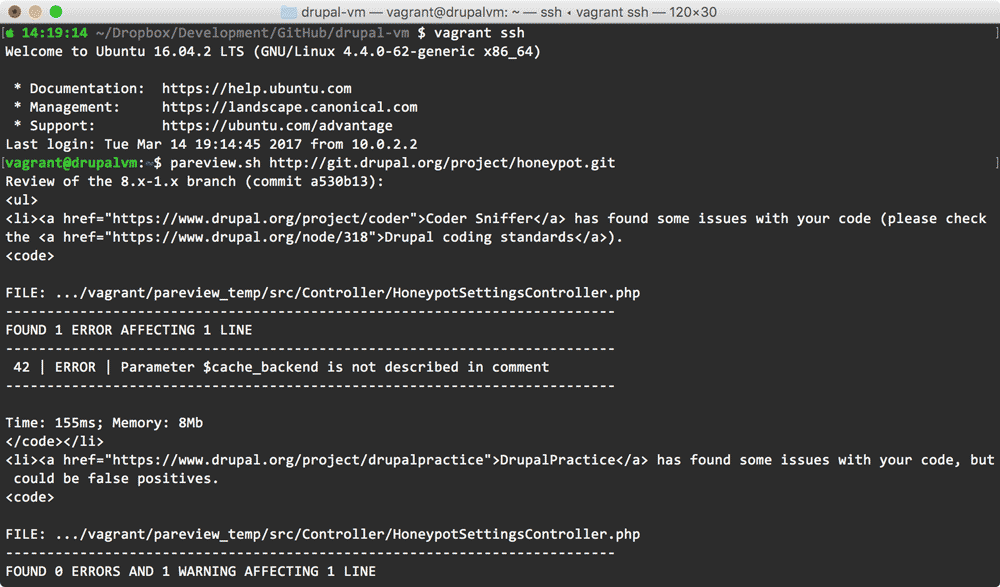

Make sure you have a gitignore file that is properly structured (BLT should do this automatically). I recommend adding the and plugins via composer.ĭo an initial git commit. You can just composer require each one of these to add them to the codebase.Īdd additional plugins for additional functionality. Here’s a list of the ones I use most commonly. info.yml file at this point, but it should be enabled!Īdd additional modules as needed for your Drupal 9 build. It doesn’t need to have anything other than a. I do not advise using this profile.Ī couple of other things I recommended at this point are:Ĭreate a common module for your project that will installed by default and enabled. Warning: the Standard profile has a known problem right now related to shortcuts and configuration management.

Simply add the following to your blt.yml file to change which profile is installed: project: You can change this by customizing the blt/blt.yml file.
#DRUPAL VM SOLAR INSTALL#
If they aren’t, try restarting Docker Desktop then doing a lando restart.Īt this point, we have the necessary files to run Drupal and we have the VM to run it in! Onto the next step which is to actually install Drupal 9 and setup the configuration management strategy.īLT sets the minimal install profile by default. LOCATION /Users/mike.madison/git/examples/drupal9Īll 4 of the URLs should be green. Once completed, you should see something like this: Your app has started up correctly. This command will provision the VMs and take roughly 5 minutes.

lando.yml fileįrom here, review the config file and customize as needed (e.g. Replace the necessary project-specific entries in the. lando.yml file into your projectĪutomatically setup BLT’s local settings files to work properly with the multi-container model used with Docker For my lando plugin that command is: blt recipes:vm:landoĬopy the. composer require mikemadison13/blt-landoĮach of these plugins has a command for BLT to start provisioning the VM. Whichever route you opt for, you’ll want to composer require the necessary plugin. Here’s some links to the plugins in question: As I mentioned, I’m going to setup Lando using my blt-lando plugin. There are numerous BLT plugins to make adding a VM easier. So depending on your own level of access on the host machine, this administrative requirement may force you to make a decision. Docker Desktop requires sudo to install, but Lando / DDev / Docksal shouldn’t require sudo every time you start and stop them. Having said that, if you’re just doing a one-off it doesn’t really matter (and I’m going to use Lando in this example).Ī friendly warning: Drupal VM requires sudo privileges every time you start and stop it. So the next step is getting a VM setup! Provisioning a VMĬhoosing a VM solution is not a decision to be undertaken lightly as it can have significant consequences on your team and organization. However we do not have the necessary containers in place to actually run Drupal. Once completed, you should see a folder listing that looks something like this:Īs of this point, we have the files that we need for a Drupal 9 site. This process should take a couple of minutes (depending on your internet connection and composer version). You can start a new project with the following command: composer create-project -no-interaction acquia/drupal-recommended-project You can use this as a starting point even if you do not host with Acquia. Implement a configuration management strategyĪcquia provides an open source recommended Drupal project for getting your composer-based project formatted and ready to go. Setup the project structure (using composer) To properly run a Drupal 9 site locally, there are a few steps you need to take: If you haven’t setup a VM before, I would suggest reviewing my post on prepping your host machine to install the requisite software.

Based on his data you can see that Lando is in the lead, but this shouldn’t dissuade you from using some of the other solutions I mentioned are very well maintained and work great.


 0 kommentar(er)
0 kommentar(er)
